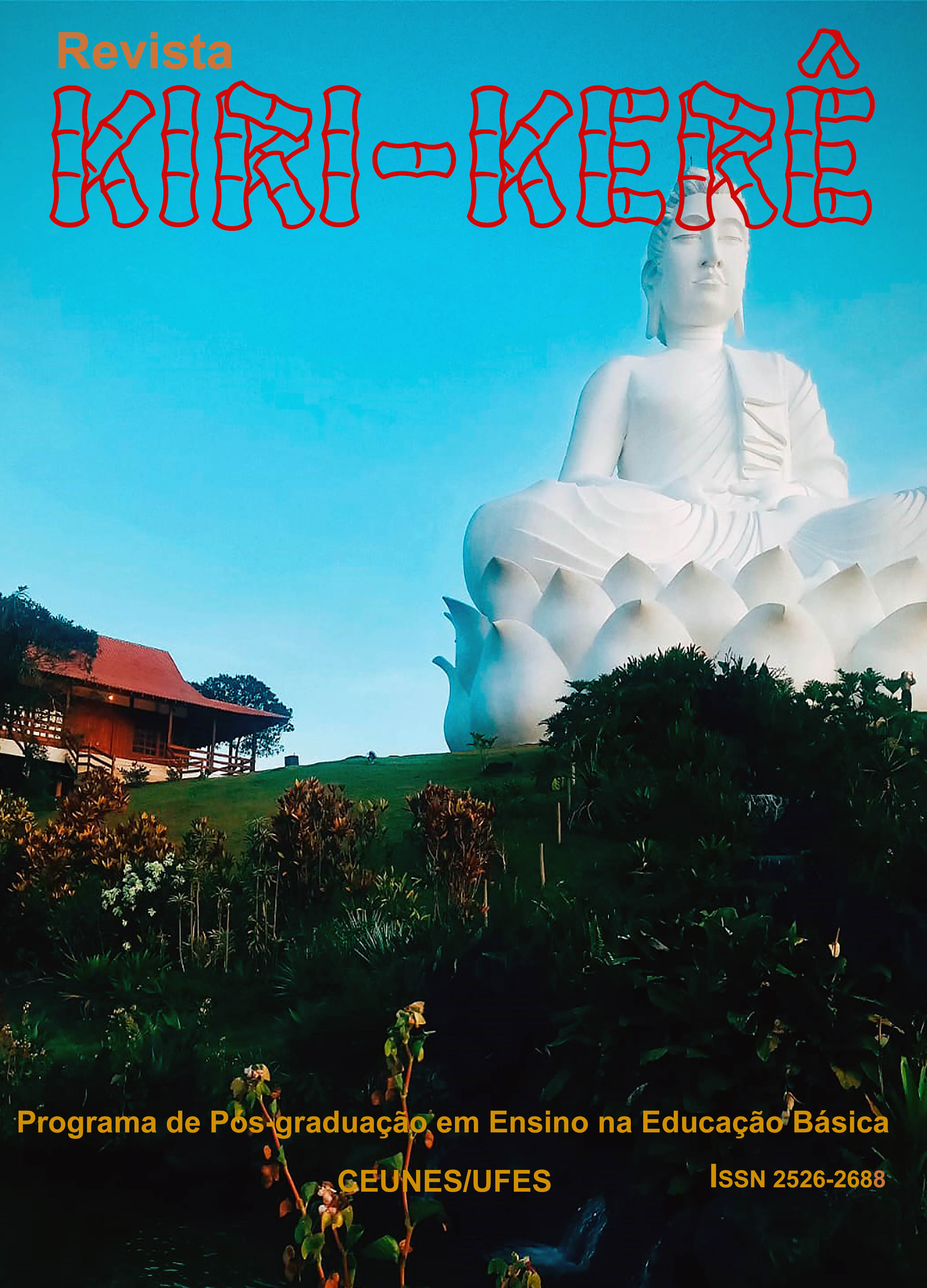A tradução interlingual como estratégia para assimilação de estruturas gramaticais da língua inglesa em materiais didáticos de inglês como segunda língua
DOI:
https://doi.org/10.47456/krkr.v1i16.39900Palavras-chave:
Tradução; Ensino de gramática da língua inglesa; Livros didáticosResumo
O objetivo desta pesquisa foi verificar de que forma a tradução é utilizada em materiais didáticos de inglês como segunda língua como estratégia para assimilação de estruturas gramaticais da língua inglesa. Trabalhamos com um grupo amostral formado por dois livros didáticos, sendo um deles adotado na rede pública do Estado do Ceará e o outro adotado no curso básico de inglês da Casa de Cultura Britânica, da Universidade Federal do Ceará. Tais livros foram os seguintes: Voices Plus 1, de Tilio (2016); e New English File Elementary Student’s Book, de Oxenden, Latham-Koenig e Seligson (2008). Esta pesquisa foi do tipo explicativo-descritiva, já que teve “como preocupação central identificar os fatores que determinam ou que contribuem para a ocorrência de fenômenos” (GIL, 2008, p. 28). Com relação ao nosso método de procedimento, optamos pelo método documental, pois foi a partir da análise de documentos de pesquisa, os livros didáticos, que acessamos nosso objeto de análise: o mecanismo da tradução como estratégia para a assimilação de estruturas gramaticais da língua inglesa. Analisamos, qualitativamente, alguns exercícios dos livros didáticos selecionados. Consideramos a tradução interlingual, a intralingual e a intersemiótica nos exercícios de gramática. A análise dos dados revelou que a tradução interlingual foi a mais recorrente e que ela foi usada com o intuito de auxiliar o aluno a assimilar as estruturas gramaticais da língua inglesa, já que o processo de tradução possibilitou, no nosso entendimento, a comparação entre as estruturas gramaticais, principalmente entre as estruturas verbais, que foram as que apresentaram as maiores diferenças entre a língua inglesa e a língua portuguesa.
Referências
BERNABÉ, F. H. L. O uso da língua materna no ensino de língua estrangeira. In: Diálogos pertinentes. Revista Científica de Letras. Franca-SP: 2008, p. 243-257.
GIL, A. C. Métodos e técnicas de pesquisa social. 6. ed. São Paulo: Atlas, 2008.
JAKOBSON, R. Linguística e comunicação. Tradução de Izidoro Blikstein e José Paulo Paes. São Paulo: Cultrix, 1976.
LAKATOS, E. M.; MARCONI, M. de A. Metodologia do trabalho científico: procedimentos básicos, pesquisa bibliográfica, projeto e relatório, publicações e trabalhos científicos. 4. ed. São Paulo: Atlas, 1992.
OXENDEN, C.; LATHAM-KOENIG, C.; e SELIGSON, P. New English File Elementary Student’s Book. Oxford: Oxford University Press, 2008.
PEIRCE, C.S. Collected papers. Vol. 5. Cambridge: Harvad University Press, 1934.
PACKER, L. L. B; AISSA, J. C. Reflexões sobre o ensino de gramática em matérias didáticos de língua inglesa. Cascavel – PR: Unioeste, 2008.
MONTEIRO, E. C.; MEDEIROS, M. A. F.; FERREIRA, M. F.; BARBOSA, V. M. S. A tradução como estratégia de ensino de língua inglesa em turmas de 8º e 9º ano do Ensino Fundamental. V Congresso Nacional de Educação. João Pessoa: V CONEDU, 2011.
TECCHIO, I.; BITTENCOURT, M. A tradução no ensino-aprendizagem de línguas estrangeiras. In: Revista Magistro. V. 2. Nº 1. Revista do Programa de Pós-Graduação em Letras e Ciências Humanas da Unigranrio. Florianópolis: 2011.
TÍLIO, R. Voices Plus 1. São Paulo: Richmond, 2016.
Downloads
Publicado
Edição
Seção
Licença
Copyright (c) 2023 FRANCISCO ELTON MARTINS DE SOUZA

Este trabalho está licenciado sob uma licença Creative Commons Attribution-NonCommercial 4.0 International License.
Os autores aceitam, quando do envio de seus trabalhos, a cessão dos direitos editoriais dos mesmos.









